Geo…Whaat?! Someone is Snooping …!
Background
What is Geospatial information or data?
 Data representing the location, size and shape of an object on the earth such as a building, lake, mountain or township.
Data representing the location, size and shape of an object on the earth such as a building, lake, mountain or township.
The bill defines geospatial information as either “geospatial imagery or data” or “graphical or digital data” pertaining to the territory of India. This would regulate any data, visual or otherwise, acquired through any means, including satellites, UAVs, drones, balloons, cameras or any GPS enabled device, as well as the representation of this data, in the form of maps, charts and print materials that depict natural or manmade features drawn to a geographic scale.
Therefore, geospatial analysis is the gathering, display and manipulation of imagery, GPS, satellite photography and historical data, described explicitly in terms of geographic coordinates or implicitly, in terms of a street address, postal code, or forest stand as they are applied to geographic models. Spatial data may also include attributes that provide more information about the entity that is being represented.
Object of drafting Geospatial regulations
The sole objective of these draft regulations is only to protect national security, sovereignty, safety and integrity of India. The intention is not to compromise the security of the country and its citizens at any cost.

The regulations in a nutshell
In India, the Government has only recently released draft bills containing regulations governing the use of geospatial information or data. It is yet to become a law.
Simply put, the regulations contain provisions that make it mandatory for any individual / entity / organisation to take permission from the government before acquiring, distributing and publishing any geospatial information of India. Anything that involves use or depiction of any geographical information or location within the territorial boundaries of India requires the permission of the government. To this end, the Government proposes the establishment of a Security vetting Authority.
Security vetting Authority – Primary Role
The Security vetting authority (SVA) shall be created in accordance with the regulations. The primary role of the SVA shall be to ascertain and vet the requirements of the individual / entity / organisation seeking to use such geospatial information. To this end, it proposes:
- conducting sensitivity checks with respect to the technical & information contents and the target area in consonance with the provisions of the prevailing National Policies;
- It will check the content and data provided and make sure it is well within national policies and
- screening of the credentials of the end-users and end-use applications.
In other countries like the USA, there is law in place. Government agencies use geospatial intelligence primarily for security and defence purpose.
(GeoINT) is intelligence derived from the analysis and exploitation of imagery and depicts physical and geographical features of various locations on earth.
On whom will this Bill have a bearing?
The bill / regulations shall directly impact any “individual” (defined in the Regulations to mean and include an individual, a company, a firm, a trust, an association of persons or a body of individuals, whether incorporated or not, every artificial juridical person, not falling within any of the preceding and any agency, office or branch owned or controlled by any of the above persons mentioned in the preceding clauses.)
The above definition covers almost the entire gamut of individuals and entities seeking location related Information and services.
A bird’s eye view of industries and sectors using location related services
Personal Use
GPS tracking, tagging photos on social media using location; travel blogs with pics etc.
Business Use
Logistics or courier industries tracking the movement of fleet or packages; urban mapping used in construction industry; mapping of wireless networks by service providers; transport apps, navigation apps etc.
Government Use
Natural resource mapping, mapping of areas, routes and places by government agencies in disaster management; wildlife conservation; preservation of world heritage sites.
The above mentioned is just a tip of the iceberg of industries and sectors that use geospatial information or data.
Penalty for usage of geospatial information
The regulations expressly state that any illegal acquisition of geospatial information of India and or using geospatial information of India will attract severe penalty ranging from Rs. 1 Crore to Rs. 100 Crore and or imprisonment of up to 7 years.
Similarly, any illegal dissemination, publication or distribution of geospatial information of India will attract severe penalty ranging from Rs. 10 lakhs to Rs. 100 Crore and or imprisonment of up to 7 years.
Conclusion
To the common man, the word “geospatial” information or data is relatively new. Nevertheless it seems to have a far reaching implication. Technology has become such an inseparable part of our daily life that it seems near impossible to obtain government permission to use location related information – be it booking a cab online or simply tagging a picture on social media.
Also the draft bill recognises that even the government requires the use of such imagery for various purposes. Despite that, Central government and State government agencies have not been brought under the purview of the Bill / regulations.
While the draft bill / Regulations are in the process of being circulated for improvisation to be made to the draft bill, it is widely believed that the regulations need to be fine-tuned. All geospatial information need not be viewed as compromising the national security. For instance, navigational maps or a plain Indian map need not considered on the same lines as that digital and satellite imagery of Uri where the counter surgical strikes were conducted by India. While the basic objective of the bill is commendable, lawmakers have to ensure that the draft bill be plugged of such loopholes to make it more effective.


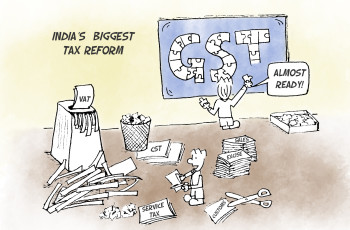
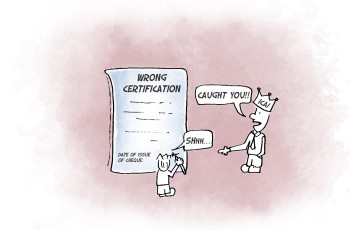
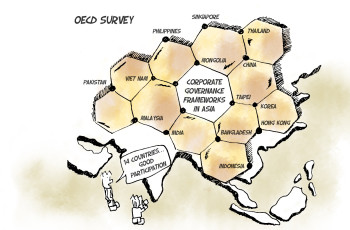
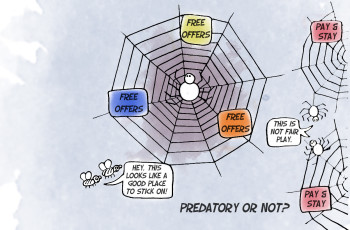
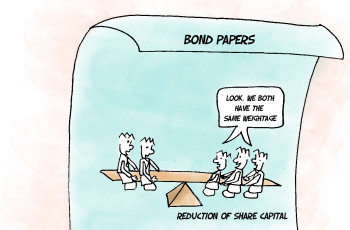
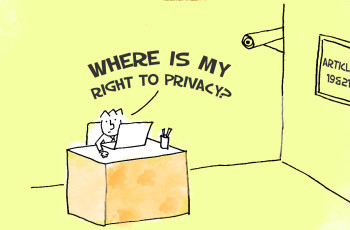

 He holds a Bachelor’s and Master’s Degree in Corporate Secretaryship and a Degree in Law. He is a Fellow member of the Institute of Company Secretaries of India and an Associate Member of the Corporate Governance Institute, UK and Ireland. He has also completed a program from ISB on ‘Value Creation through Mergers and Acquisitions.
He holds a Bachelor’s and Master’s Degree in Corporate Secretaryship and a Degree in Law. He is a Fellow member of the Institute of Company Secretaries of India and an Associate Member of the Corporate Governance Institute, UK and Ireland. He has also completed a program from ISB on ‘Value Creation through Mergers and Acquisitions. Mr P Muthusamy is an Indian Revenue Service (IRS) officer with an outstanding career of 30+ years of experience and expertise in all niche areas of Indirect Taxes covering a wide spectrum including GST, Customs, GATT Valuation, Central Excise and Foreign Trade.
Mr P Muthusamy is an Indian Revenue Service (IRS) officer with an outstanding career of 30+ years of experience and expertise in all niche areas of Indirect Taxes covering a wide spectrum including GST, Customs, GATT Valuation, Central Excise and Foreign Trade. During his judicial role, he heard and decided a large number of cases, including some of the most sensitive, complicated, and high-stake matters on insolvency and bankruptcy, including many cases on resolution plans, shareholder disputes and Schemes of Amalgamation, De-mergers, restructuring etc.,
During his judicial role, he heard and decided a large number of cases, including some of the most sensitive, complicated, and high-stake matters on insolvency and bankruptcy, including many cases on resolution plans, shareholder disputes and Schemes of Amalgamation, De-mergers, restructuring etc., Ms. Sarah Abraham has been enrolled with the Bar Council of Tamil Nadu since 1998. Her areas of practice include Shareholder Disputes, Corporate Compliances, Mergers and Acquisitions, Private Equity/ Venture Capital Agreements and allied disputes, Information Technology Contracts, Intellectual Property, General Commercial Agreements, Litigation, Arbitration and Mediation.
Ms. Sarah Abraham has been enrolled with the Bar Council of Tamil Nadu since 1998. Her areas of practice include Shareholder Disputes, Corporate Compliances, Mergers and Acquisitions, Private Equity/ Venture Capital Agreements and allied disputes, Information Technology Contracts, Intellectual Property, General Commercial Agreements, Litigation, Arbitration and Mediation. A K Mylsamy is the Founder, Managing Partner and the anchor of the firm. He holds a Degree in law and a Degree in Literature. He is enrolled with the Bar Council of Tamil Nadu.
A K Mylsamy is the Founder, Managing Partner and the anchor of the firm. He holds a Degree in law and a Degree in Literature. He is enrolled with the Bar Council of Tamil Nadu. M Subathra holds a Degree in law and a Master’s Degree in International Business Law from the University of Manchester, United Kingdom. She is enrolled with the Bar Council of Tamil Nadu.
M Subathra holds a Degree in law and a Master’s Degree in International Business Law from the University of Manchester, United Kingdom. She is enrolled with the Bar Council of Tamil Nadu. Mr. K Rajendran is a former Indian Revenue Service (IRS) officer with a distinguished service of 35 years in the Indirect Taxation Department with rich experience and expertise in the fields of Customs, Central Excise, Service Tax and GST. He possesses Master’s Degree in English literature. Prior to joining the Department, he served for the All India Radio, Coimbatore for a period of about 4 years.
Mr. K Rajendran is a former Indian Revenue Service (IRS) officer with a distinguished service of 35 years in the Indirect Taxation Department with rich experience and expertise in the fields of Customs, Central Excise, Service Tax and GST. He possesses Master’s Degree in English literature. Prior to joining the Department, he served for the All India Radio, Coimbatore for a period of about 4 years. An MBA from the Indian Institute of Management, Calcutta, and an M.Sc. in Tourism Management from the Scottish Hotel School, UK, Ashok Anantram was one fo the earliest IIM graduates to enter the Indian hospitality industry. He joined India Tourism Development Corporation (ITDC) in 1970 and after a brief stint proceeded to the UK on a scholarship. On his return to India, he joined ITC Hotels Limited in 1975. Over the 30 years in this Organisation, he held senior leadership positions in Sales & Marketing and was its Vice President – Sales & Marketing. He was closely involved in decision making at the corporate level and saw the chain grow from a single hotel in 1975 to a very large multi-brand professional hospitality group.
An MBA from the Indian Institute of Management, Calcutta, and an M.Sc. in Tourism Management from the Scottish Hotel School, UK, Ashok Anantram was one fo the earliest IIM graduates to enter the Indian hospitality industry. He joined India Tourism Development Corporation (ITDC) in 1970 and after a brief stint proceeded to the UK on a scholarship. On his return to India, he joined ITC Hotels Limited in 1975. Over the 30 years in this Organisation, he held senior leadership positions in Sales & Marketing and was its Vice President – Sales & Marketing. He was closely involved in decision making at the corporate level and saw the chain grow from a single hotel in 1975 to a very large multi-brand professional hospitality group. Mani holds a Bachelor Degree in Science and P.G. Diploma in Journalism and Public Relations. He has a rich and varied experience of over 4 decades in Banking, Finance, Hospitality and freelance Journalism. He began his career with Andhra Bank and had the benefit of several training programs in Banking.
Mani holds a Bachelor Degree in Science and P.G. Diploma in Journalism and Public Relations. He has a rich and varied experience of over 4 decades in Banking, Finance, Hospitality and freelance Journalism. He began his career with Andhra Bank and had the benefit of several training programs in Banking. Mr. Kailash Chandra Kala joined the Department of Revenue, Ministry of Finance as ‘Customs Appraiser’ at Mumbai in the year 1993.
Mr. Kailash Chandra Kala joined the Department of Revenue, Ministry of Finance as ‘Customs Appraiser’ at Mumbai in the year 1993.
 S Ramanujam, is a Chartered Accountant with over 40 years of experience and specialization in areas of Corporate Tax, Mergers or Demergers, Restructuring and Acquisitions. He worked as the Executive Vice-President, Group Taxation of the UB Group, Bangalore.
S Ramanujam, is a Chartered Accountant with over 40 years of experience and specialization in areas of Corporate Tax, Mergers or Demergers, Restructuring and Acquisitions. He worked as the Executive Vice-President, Group Taxation of the UB Group, Bangalore. K K Balu holds a degree in B.A and B.L and is a Corporate Lawyer having over 50 years of Legal, Teaching and Judicial experience.
K K Balu holds a degree in B.A and B.L and is a Corporate Lawyer having over 50 years of Legal, Teaching and Judicial experience. Justice M. Jaichandren hails from an illustrious family of lawyers, academics and politicians. Justice Jaichandren majored in criminology and then qualified as a lawyer by securing a gold medal. He successfully practiced in the Madras High Court and appeared in several civil, criminal, consumer, labour, administrative and debt recovery tribunals. He held office as an Advocate for the Government (Writs Side) in Chennai and was on the panel of several government organizations as senior counsel. His true passion lay in practicing Constitutional laws with focus on writs in the Madras High Court. He was appointed Judge, High Court of Madras in December 2005 and retired in February 2017.
Justice M. Jaichandren hails from an illustrious family of lawyers, academics and politicians. Justice Jaichandren majored in criminology and then qualified as a lawyer by securing a gold medal. He successfully practiced in the Madras High Court and appeared in several civil, criminal, consumer, labour, administrative and debt recovery tribunals. He held office as an Advocate for the Government (Writs Side) in Chennai and was on the panel of several government organizations as senior counsel. His true passion lay in practicing Constitutional laws with focus on writs in the Madras High Court. He was appointed Judge, High Court of Madras in December 2005 and retired in February 2017. S Balasubramanian is a Commerce and Law Graduate. He is a member of the Delhi Bar Council, an associate Member of the Institute of Chartered Accountants of India, the Institute of Company Secretaries of India and Management Accountants of India.
S Balasubramanian is a Commerce and Law Graduate. He is a member of the Delhi Bar Council, an associate Member of the Institute of Chartered Accountants of India, the Institute of Company Secretaries of India and Management Accountants of India.